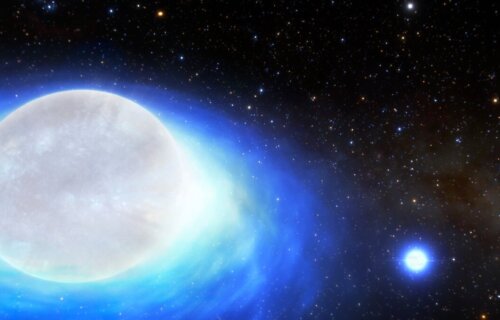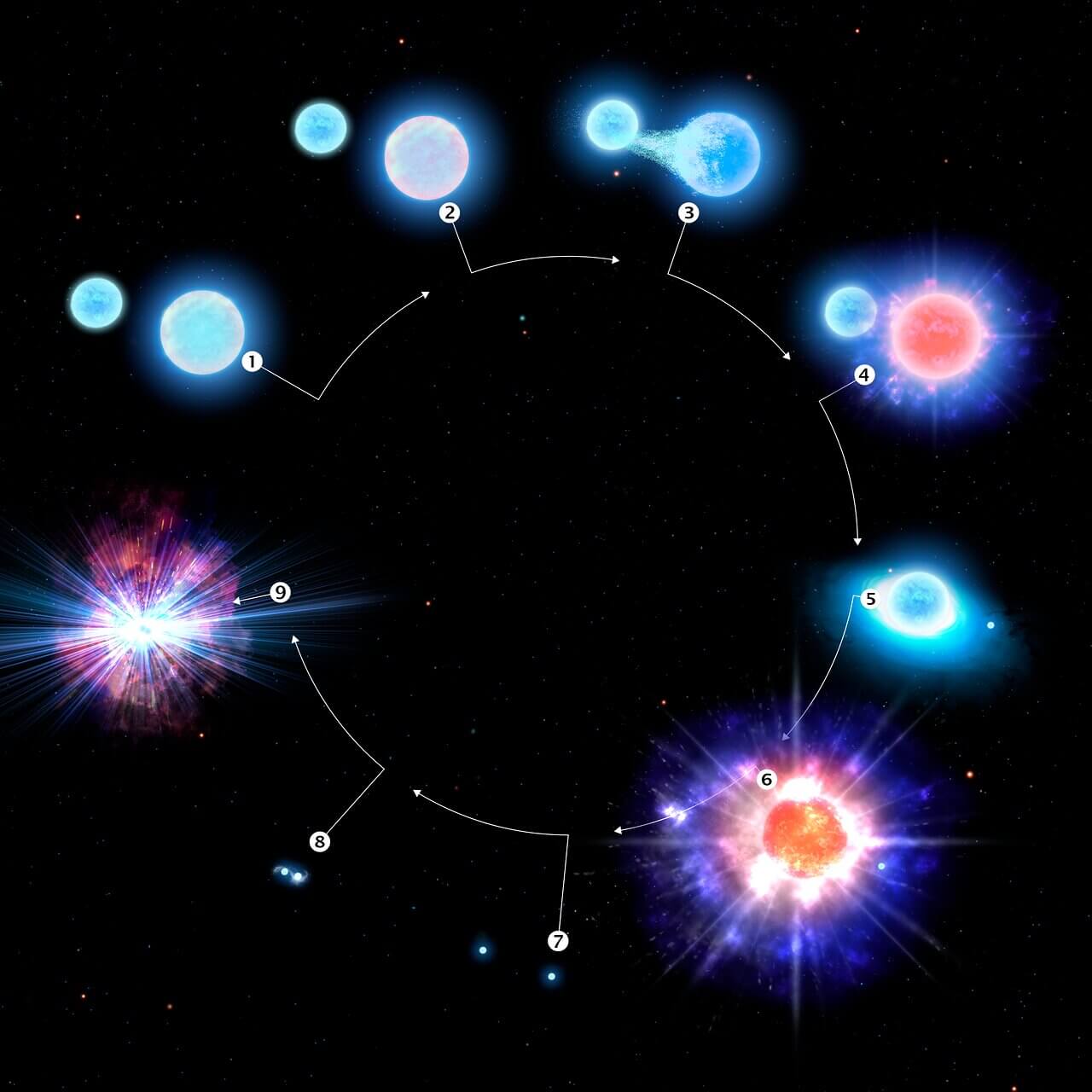Astronomers discover ‘1-in-10-billion’ binary star system that may explode into cosmic gold!

COQUIMBO, Chile — A one-in-ten-billion binary star system may one day set off an ultra-powerful that showers space with gold. Astronomers used the SMARTS 1.5-meter Telescope at Cerro Tololo Inter-American Observatory in Chile, a Program of NSF’s NOIRLab, to make this first-of-its-kind discover. The team behind the discovery call the star system “phenomenally rare” and add that it features all of the necessary conditions to eventually trigger a kilonova.
The researchers describe it as an ultra-powerful, gold-producing explosion created when two neutron stars collide. The conditions needed for such an event are so exceedingly rare scientists believe that only about 10 such systems exist in the entire Milky Way galaxy.
The newly identified system is called CPD-29 2176 and is located about 11,400 light years from Earth. NASA’s Neil Gehrels Swift Observatory initially spotted the stars. Then, further observations made by the SMARTS 1.5-meter Telescope allowed astronomers to deduce the orbital characteristics and types of stars making up the system; a neutron star created by an ultra-stripped supernova as well as a closely orbiting massive star currently in the process of becoming an ultra-stripped supernova itself.
An “ultra-stripped supernova” refers to the end-of-life explosion of a massive star that has had most of its outer atmosphere stripped away by a companion star. This type of supernova lacks the explosive force of a more traditional supernova, which would normally “kick” any nearby companion stars out of the system.
“The current neutron star would have to form without ejecting its companion from the system. An ultra-stripped supernova is the best explanation for why these companion stars are in such a tight orbit,” says lead author Noel Richardson from Embry-Riddle Aeronautical University in a media release. “To one day create a kilonova, the other star would also need to explode as an ultra-stripped supernova so the two neutron stars could eventually collide and merge.”

Besides these findings marking the major discovery of an incredibly rare cosmic oddity, the opportunity to now study a kilonova progenitor system can help astronomers unravel the mystery of how these explosions form in the first place. It could potentially shed further light on the origins of some of the heaviest elements in the entire universe.
“For quite some time, astronomers speculated about the exact conditions that could eventually lead to a kilonova,” explains NOIRLab astronomer and study co-author André-Nicolas Chené. “These new results demonstrate that, in at least some cases, two sibling neutron stars can merge when one of them was created without a classical supernova explosion.”
Of course, producing such an unusual system is an incredibly long process with a low percentage chance of success.
“We know that the Milky Way contains at least 100 billion stars and likely hundreds of billions more. This remarkable binary system is essentially a one-in-ten-billion system,” Chené continues. “Prior to our study, the estimate was that only one or two such systems should exist in a spiral galaxy like the Milky Way.”
It’s important to understand that while this newly found system features all the right ingredients to eventually form a kilonova, the eventual task of actually studying the event will almost certainly fall on future astronomers. Study authors estimate it will take at least one million years for the massive star to end its life as a titanic supernova explosion and leave behind a second neutron star. Then, that stellar remnant and the pre-existing neutron star will have to gradually draw together in a “cosmic ballet” of sorts, slowly but surely losing their orbital energy as gravitational radiation.
Eventually, the resulting kilonova explosion will produce much more powerful gravitational waves and leave tons of heavy elements like silver and gold in its wake.
“This system reveals that some neutron stars are formed with only a small supernova kick,” Richardson concludes. “As we understand the growing population of systems like CPD-29 2176 we will gain insight into how calm some stellar deaths may be and if these stars can die without traditional supernovae.”
The study is published in the journal Nature.
No comments:
Post a Comment